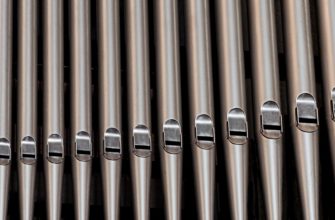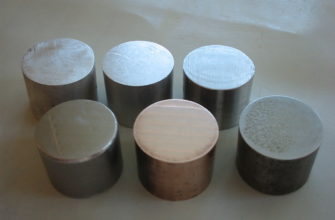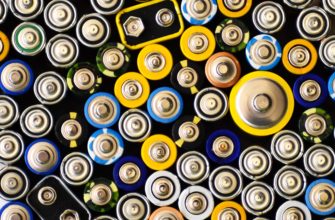SS 430 stainless steel is a commonly used material in various industries due to its favorable combination of corrosion resistance, heat resistance and mechanical properties. When analyzing the composition and properties of this stainless steel grade, it is important to consider both its chemical composition and material properties.
430 Stainless Steel Chemical Composition
The chemical composition of SS 430 stainless steel is essential in understanding its performance characteristics. It primarily consists of iron (Fe) as the base element, with a significant amount of chromium (Cr) and small additions of other elements for enhanced properties. The composition of 430 stainless steel typically includes:
- Chromium (Cr): 16-18%
- Nickel (Ni): <1%
- Manganese (Mn): <1%
- Carbon (C): <0.12%
- Silicon (Si): <1%
- Phosphorus (P): <0.04%
- Sulfur (S): <0.03%
This specific composition provides the desired balance of corrosion resistance and mechanical properties for various applications.
SS 430 Stainless Steel Material Properties
The material properties of SS 430 stainless steel are key factors in determining its suitability for specific applications. The properties of 430 stainless steel include:
- Corrosion Resistance: SS 430 exhibits good corrosion resistance in mild atmospheres, and it is resistant to certain chemicals and solvents. However, it is less resistant to corrosion compared to stainless steel grades with higher chromium content.
- Heat Resistance: 430 stainless steel offers moderate heat resistance and can withstand temperatures up to approximately 815°C (1500°F). This makes it suitable for applications involving moderate heat exposure.
- Mechanical Properties: SS 430 demonstrates good mechanical properties, including high tensile strength, excellent formability and moderate to good ductility. These properties make it suitable for various manufacturing processes and structural applications.
Overall, the composition and properties of SS 430 stainless steel make it a versatile material that can be used in a wide range of applications, including automotive trim and appliances.

Chemical Composition of 430 Stainless Steel
430 stainless steel is a ferritic steel that contains chromium as the primary alloying element. It also contains small amounts of carbon, manganese, silicon, sulfur, phosphorus and iron. The specific chemical composition of 430 stainless steel is as follows:
- Chromium (Cr): 16-18%
- Carbon (C): 0.12% max
- Manganese (Mn): 1% max
- Silicon (Si): 1% max
- Sulfur (S): 0.03% max
- Phosphorus (P): 0.04% max
- Iron (Fe): Balance
The high chromium content provides excellent corrosion resistance, making it suitable for various applications in environments that are mildly corrosive. The low carbon content helps to prevent carbide precipitation and subsequent sensitization, which can cause intergranular corrosion. The presence of manganese and silicon contributes to the steel’s strength, formability, and resistance to scaling at high temperatures. The sulfur and phosphorus content is kept low to enhance the steel’s weldability. Finally, the iron serves as the base element of the alloy, providing the necessary structure and strength.
Breakdown of key elements and their percentages
The chemical composition of 430 stainless steel consists of several key elements, each contributing to its overall properties.
One of the primary elements in the composition of 430 stainless steel is chromium (Cr). It makes up a significant percentage, typically ranging from 16% to 18%. Chromium provides ss 430 with its excellent resistance to corrosion, especially in oxidizing environments. This property makes it suitable for applications where exposure to moisture or chemicals is expected, such as kitchen appliances, automotive trim, and architectural structures.
- Chromium (Cr): 16% – 18%
- Iron (Fe): Balance
“The high chromium content in 430 stainless steel contributes to its excellent corrosion resistance in oxidizing environments.”
In addition to chromium, another important element in 430 stainless steel is iron (Fe). Iron is the base metal in this alloy, accounting for the majority of the composition. It provides the structural integrity and strength to the material. The presence of iron also allows 430 stainless steel to be magnetized, making it suitable for magnetic applications. The percentage of iron in ss 430 usually exceeds 80%, ensuring its mechanical stability and toughness.
The combination of chromium and iron, along with other minor elements, gives 430 stainless steel its unique properties, making it a versatile material that finds applications in various industries.
Impact on corrosion resistance and durability
The corrosion resistance and durability of SS 430 stainless steel is greatly influenced by its chemical composition and properties. The chemical composition of stainless steel 430 includes a high amount of chromium (16-18%), which provides excellent corrosion resistance to a wide range of environments, including mild atmospheric, fresh water, and some chemicals. Chromium forms a protective oxide layer on the surface of the steel, preventing further corrosion and rusting. This makes stainless steel 430 suitable for various applications that require resistance to corrosion, such as kitchen appliances, automotive components, and architectural applications.
In addition to chromium, SS 430 stainless steel also contains other elements like nickel, manganese, and carbon. Nickel enhances the corrosion resistance and toughness of the steel, while manganese improves its strength and hardness. The presence of carbon helps to increase the steel’s overall strength and improve its machinability. However, it is important to note that SS 430 stainless steel has a lower corrosion resistance compared to other stainless steel grades, such as 304 and 316.
- The impact of the chemical composition of SS 430 on its corrosion resistance:
- Chromium: Provides excellent corrosion resistance by forming a protective oxide layer.
- Nickel: Enhances corrosion resistance and toughness.
- Manganese: Improves strength and hardness.
- Carbon: Increases strength and machinability.
Table: Comparison of corrosion resistance between SS 430 and other stainless steel grades
| Stainless Steel Grade | Corrosion Resistance |
|---|---|
| SS 430 | Good resistance to mild atmospheric, fresh water, and some chemicals. |
| SS 304 | Excellent resistance to a wide range of corrosive environments. |
| SS 316 | Superior resistance to corrosive environments, including chloride-containing solutions. |
SS 430 stainless steel provides good corrosion resistance in many environments, making it suitable for applications where moderate resistance is required. However, it is important to consider the specific corrosive environment and consult with experts for selecting the most suitable stainless steel grade. The overall durability of SS 430 stainless steel is also influenced by factors such as heat treatment, surface finish, and proper maintenance. Regular cleaning and maintenance can help prolong the lifespan and enhance the durability of stainless steel 430 components.

Material Properties of SS 430
Stainless steel 430, also known as SS 430, is a ferritic stainless steel that is widely used in various industries due to its excellent resistance to corrosion and oxidation. The ss 430 composition consists of iron, chromium and small amounts of carbon, manganese, silicon, phosphorus, sulfur and nickel. These elements contribute to the unique combination of properties exhibited by stainless steel 430, making it suitable for a wide range of applications.
One of the key ss 430 properties is its high corrosion resistance, which is attributed to the presence of chromium in its composition. Chromium forms a protective oxide layer on the surface of stainless steel 430, preventing further corrosion and ensuring its durability. Additionally, ss 430 exhibits good heat resistance and can withstand high temperatures without losing its mechanical properties. This makes it suitable for applications in the automotive, aerospace, and construction industries.
Table: Stainless Steel 430 Material Properties
| Properties | Values |
|---|---|
| Tensile Strength | 450-600 MPa |
| Yield Strength | 205-450 MPa |
| Hardness | Rockwell B 85 max |
| Elongation | 25% min |
| Thermal Conductivity | 23.9 W/m-K |
| Magnetic properties | Fully magnetic |
Other notable ss 430 material properties include its high tensile strength and yield strength, which contribute to its excellent mechanical properties. It also has a high hardness level, as indicated by its maximum Rockwell B hardness of 85. Furthermore, ss 430 has good formability and can be easily fabricated into various shapes and sizes.
Strength, hardness, and toughness
The strength, hardness and toughness of 430 stainless steel make it a popular choice for various applications. The stainless steel 430 chemical composition plays a significant role in determining these properties.
SS 430 chemical composition consists of a balance of iron, chromium and other elements such as manganese, silicon and carbon. The primary elements that contribute to the strength and toughness of 430 stainless steel are iron and chromium. Iron provides the basic structural strength, while chromium enhances the corrosion resistance and adds hardness to the material. The addition of manganese and silicon helps in improving the strength and toughness of the stainless steel.
- Strength: The strength of 430 stainless steel material properties is relatively high due to its composition. It has a tensile strength of about 450-600 MPa (mega pascals), making it suitable for applications requiring high strength and resistance to deformation.
- Hardness: SS 430 composition includes a significant amount of chromium, which makes it a hard material. It has a hardness of about 180-220 Brinell hardness (HB) value. This hardness contributes to its durability and resistance to wear and abrasion.
- Toughness: Although 430 stainless steel is not as tough as some other stainless steel grades, it still exhibits a reasonable amount of toughness. The toughness of a material is its ability to absorb energy without fracturing. The combination of strength and hardness provides 430 stainless steel with a good level of toughness, making it suitable for various applications.
In conclusion, the strength, hardness and toughness of 430 stainless steel are crucial factors in determining its suitability for different applications. Its composition, particularly the presence of iron, chromium, manganese, and silicon, plays a significant role in enhancing these properties. The high strength, hardness and reasonable toughness make 430 stainless steel a versatile material for a wide range of applications that require these characteristics.
Magnetic Properties
The magnetic properties of SS 430 stainless steel are an important characteristic that sets it apart from other types of stainless steel. It exhibits ferritic magnetic behavior, meaning it has a high magnetic permeability and can be easily magnetized. This is due to the composition and crystal structure of 430 stainless steel.
The chemical composition of SS 430 includes iron, chromium and a small amount of carbon. The high iron content in this stainless steel contributes to its magnetic properties. The chromium content also plays a role in determining the magnetic behavior, as it influences the crystal structure. The crystal structure of 430 stainless steel is body-centered cubic (BCC), which can be easily magnetized.
| Element | Composition |
|---|---|
| Iron (Fe) | Minimum of 80% |
| Chromium (Cr) | Between 16% and 18% |
| Carbon (C) | Maximum of 0.12% |
| Manganese (Mn) | Maximum of 1% |
| Silicon (Si) | Maximum of 1% |
It is important to note that the magnetic properties of SS 430 can be altered by various factors, such as heat treatment or mechanical stress. For example, annealing the material at high temperatures can reduce its magnetic permeability and make it less magnetizable. Similarly, applying mechanical stress to the material can also alter its magnetic behavior.

Understanding SS 430 Properties
The composition of SS 430 includes approximately 16-18% chromium and less than 0.12% of carbon. This composition makes SS 430 a ferritic stainless steel with good corrosion resistance, moderate strength and excellent formability.
One of the key ss 430 properties is its corrosion resistance, which is mainly due to the presence of chromium in the composition. Chromium forms a protective oxide layer on the surface of the steel, preventing it from rusting and making it resistant to many corrosive environments. However, it is worth noting that SS 430 may not be as corrosion resistant as other stainless steel grades with higher chromium content, such as SS 304 or SS 316.
Due to its ferritic structure, 430 stainless steel is magnetic and can be easily attracted to magnets. This magnetic property makes it suitable for certain applications, such as magnetic components or objects that require magnetic properties.
| Chemical Element | Percentage Range |
|---|---|
| Iron (Fe) | Balance |
| Chromium (Cr) | 16-18% |
| Carbon (C) | Less than 0.12% |
| Nickel (Ni) | Less than 0.75% |
| Manganese (Mn) | Less than 1% |
| Silicon (Si) | Less than 1% |
| Sulfur (S) | Less than 0.03% |
| Phosphorus (P) | Less than 0.04% |
Heat Resistance and Oxidation of 430 Stainless Steel
The chemical composition of this steel, primarily composed of iron, chromium, and small amounts of carbon and other elements, contributes to its heat resistance.
One of the key features of 430 stainless steel is its ability to withstand high temperatures. It has a melting point of approximately 1425-1510°C, allowing it to maintain its structural integrity in high heat environments. Additionally, the presence of a minimum of 16% chromium in its composition provides enhanced heat resistance, as chromium forms a protective oxide layer on the surface of the steel when exposed to high temperatures.
- High temperature oxidation resistance
- Strength and toughness retention at elevated temperatures
- Excellent scaling resistance
A crucial factor in the heat resistance of 430 stainless steel is its oxidation resistance. When exposed to oxygen at high temperatures, the chromium in the composition interacts with the oxygen to form a thin layer of chromium oxide on the surface. This oxide layer acts as a protective barrier, preventing further oxidation and corrosion of the steel. It helps in maintaining the overall structural integrity and prolongs the lifespan of the material.
In conclusion, the heat resistance and oxidation properties of 430 stainless steel make it suitable for various applications that involve high temperatures. Its composition, specifically the presence of chromium, allows it to withstand heat and form a protective oxide layer, enabling it to resist oxidation and scaling. These properties make it a reliable choice in industries such as automotive, food processing and industrial equipment manufacturing.
Applications based on the properties of 430 stainless steel
Due to its unique combination of properties, 430 stainless steel finds a wide range of applications in various industries.
- Cookware and Kitchen Appliances: One of the most common applications of 430 stainless steel is in the manufacturing of kitchen utensils and appliances. Its resistance to corrosion and staining makes it a popular choice for cookware, cutlery and sinks. Additionally, its ability to withstand high temperatures makes it suitable for oven and stove components.
- Automotive Industry: 430 stainless steel is often used in the automotive industry for various parts, such as exhaust systems, trim and decorative elements. Its corrosion resistance makes it suitable for these applications, especially in environments where exposure to moisture and road salts is common.
- Architectural Applications: The aesthetic appeal and durability of 430 stainless steel make it a preferred choice for architectural applications. It is commonly used for interior and exterior building cladding, decorative panels and handrails. Its resistance to weathering and easy maintenance make it ideal for these applications.
- Industrial Equipment: 430 stainless steel is widely used in the manufacturing of industrial equipment due to its excellent heat and oxidation resistance. It is commonly used for furnace parts, heat exchangers and chemical processing equipment.
In summary, the properties of 430 stainless steel, such as corrosion resistance, ductility and high-temperature stability, make it suitable for a wide range of applications. From cookware and kitchen appliances to automotive and architectural uses, this versatile material continues to play a vital role in various industries.

Comparative Analysis
When analyzing the composition of SS 430 stainless steel, it is important to compare it with other stainless steel alloys to understand its unique properties and characteristics.
One key aspect to consider is the ss 430 composition. Stainless steel 430 is a ferritic stainless steel with a chromium content of 16-18%. This composition is similar to other ferritic stainless steels, such as SS 409 and SS 434. However, it has a lower nickel content compared to austenitic stainless steels like SS 304 and SS 316. This difference in composition impacts the overall properties of the stainless steel.
When examining the properties of stainless steel 430, the lower nickel content contributes to its lower corrosion resistance compared to austenitic stainless steels. However, it still offers good resistance to corrosion in mild environments. Additionally, SS 430 has excellent oxidation resistance at high temperatures, making it suitable for applications where it will be exposed to heat.
Overall, the ss 430 chemical composition and properties make it a versatile stainless steel alloy with a unique balance of strength, corrosion resistance, and high-temperature oxidation resistance. By comparing its composition and properties with other stainless steel alloys, one can better understand its specific advantages and limitations.
Practical Implications
The practical implications of understanding the properties and composition of SS 430 stainless steel are vast. This knowledge allows engineers and manufacturers to make informed decisions when selecting materials for a specific application.
For example, knowing the chemical composition of 430 stainless steel allows engineers to evaluate its corrosion resistance. With a minimum chromium content of 16%, SS 430 exhibits excellent resistance to oxidizing environments, making it suitable for applications in food processing, automotive components and architectural structures.
- SS 430 Properties:
- Good corrosion resistance in oxidizing environments;
- Heat resistance up to 815°C (1500°F);
- Fair resistance to nitric acid;
- Poor resistance to sulfuric acid;
- Excellent ductility and toughness;
- Good formability and weldability.
Note: It is worth mentioning that while SS 430 offers good corrosion resistance, it is susceptible to stress corrosion cracking in high-strength chloride solutions. Therefore, it is crucial to consider the environment in which the material will be used and ensure proper maintenance to prevent any potential issues.
Real-world applications and industries utilizing SS 430
One of the key properties of SS 430 is its excellent corrosion resistance. It contains chromium, which forms a protective oxide layer on the surface, preventing corrosion and staining. This makes it an ideal choice for applications in humid or corrosive environments, such as coastal areas, chemical processing plants and food processing equipment.
- Automotive industry: SS 430 is commonly used in the automotive industry for manufacturing exhaust systems and mufflers. Its high heat resistance and corrosion resistance make it a durable choice for these components.
- Kitchenware and appliances: SS 430 is widely used in the production of kitchenware and appliances, such as sinks, cookware, and oven elements. Its aesthetic appeal, ease of maintenance, and resistance to staining make it a popular choice in this industry.
- Architecture and construction: SS 430 finds applications in architectural projects, such as decorative elements, roofing, and cladding. Its corrosion resistance and ability to retain its appearance over time make it an attractive material for these purposes.
The chemical composition of SS 430, specifically its high chromium content and low carbon content, contributes to its overall properties. It has a chemical composition of approximately 16-18% chromium, 0.12% carbon, and 1% manganese. This composition, along with other alloying elements, enhances its strength, toughness, and workability.

Maintenance and Care of SS 430 Stainless Steel
Proper maintenance and care of SS 430 stainless steel is essential to ensure its longevity and continued performance. Understanding the 430 stainless steel properties and composition will help in determining the best practices for its care.
SS 430 stainless steel is known for its excellent corrosion resistance, making it suitable for a variety of applications. However, it is still important to take certain precautions to maintain its appearance and prevent damage.
- Cleaning: Regular cleaning with mild soap and water is recommended for routine maintenance of SS 430 stainless steel. Avoid using harsh chemicals or abrasive cleaners as they can cause damage to the surface. After cleaning, always rinse the stainless steel thoroughly to remove any residue.
- Protection: To protect the surface of SS 430 stainless steel, use a non-abrasive polish or cleaner specifically designed for stainless steel. This will help to remove any stains or fingerprints and provide a protective barrier against future damage. It is also important to avoid prolonged exposure to salt or chlorine, as these can corrode the stainless steel.
- Preventing Scratches: While SS 430 stainless steel is relatively scratch-resistant, it is still important to take precautions to prevent scratches. Avoid using abrasive materials or tools when cleaning or handling the stainless steel. Additionally, using cutting boards or mats can help to prevent scratches when preparing food on stainless steel countertops or surfaces.
By following these maintenance and care guidelines, you can ensure the longevity and appearance of SS 430 stainless steel. Understanding its properties and composition will help in taking the necessary precautions for its proper care.
Tips for Preserving the Integrity of SS 430
To ensure the long-lasting performance of SS 430, it is essential to take proper care and maintenance measures. Here are some tips to preserve the integrity of SS 430:
- Regular Cleaning: SS 430 possesses excellent corrosion resistance properties, but regular cleaning is still necessary to remove any dirt, debris or contaminants that could potentially lead to surface corrosion. Use a mild detergent or stainless steel cleaner to wipe the surface clean, then rinse and dry thoroughly.
- Avoid Chlorinated Cleaners: Chlorine-based or chlorinated cleaners should be avoided when cleaning SS 430. These cleaners can cause pitting corrosion on the surface and compromise the integrity of the material. Instead, opt for non-chlorinated cleaners specifically formulated for stainless steel.
- Prevent Exposure to Chloride: Chloride ions can accelerate the corrosion process in stainless steel. Avoid exposing SS 430 to environments with high chloride content, such as saltwater or chlorinated pool water. If exposure is unavoidable, rinse the stainless steel surface with fresh water after contact to remove any chloride residue.
Additionally, it is important to note that SS 430 is susceptible to heat discoloration when exposed to high temperatures. To prevent discoloration, it is recommended to avoid prolonged exposure to temperatures above 800°C (1472°F) and to use proper heat shields or heat insulation when SS 430 is used in high-temperature applications.

Future Developments
With its unique combination of properties, SS 430 stainless steel has gained popularity in various industries. However, there is still scope for future developments to further enhance its properties and expand its applications.
One area of improvement for SS 430 properties is its corrosion resistance. Although it has good resistance to atmospheric corrosion, it is less resistant to pitting and crevice corrosion compared to other stainless steel grades. Research and development efforts can focus on alloying elements or surface treatments that can improve the corrosion resistance of SS 430.
Another area of potential development is the mechanical properties of SS 430. While it has good formability and ductility, its strength is relatively low compared to other stainless steel grades. Engineered microstructures and heat treatments can be explored to increase the strength and hardness of SS 430 without compromising its other desirable properties such as formability and weldability.
- Improving corrosion resistance of SS 430
- Enhancing mechanical properties of SS 430
Further research and development efforts can focus on improving the corrosion resistance of SS 430, such as exploring alloying elements or surface treatments.
To expand the applications of SS 430, efforts can be made to enhance its mechanical properties, such as increasing its strength and hardness through engineered microstructures and heat treatments.
| Future Developments |
|---|
| 1. Improving corrosion resistance of SS 430 |
| 2. Enhancing mechanical properties of SS 430 |
Potential Advancements and Innovations Related to SS 430
430 stainless steel properties and stainless steel 430 chemical composition make it a versatile material that finds application in various industries. Its excellent corrosion resistance, oxidation resistance, and thermal conductivity make it suitable for use in environments with high temperatures and corrosive substances. However, there are ongoing advancements and innovations related to SS 430 that aim to further enhance its properties and expand its applications.
1. Alloying Element Improvements:
One area of research focuses on optimizing the chemical composition of 430 stainless steel by introducing different alloying elements. For example, adding small amounts of elements like nickel or molybdenum can enhance its corrosion resistance and improve its mechanical properties, such as tensile strength and toughness. These alloying element improvements can further broaden the range of applications for SS 430, particularly in industries where resistance to specific corrosive environments is critical.
2. Surface Coatings and Treatments:
Another avenue for innovation is the development of advanced surface coatings and treatments for SS 430. These coatings can further enhance the material’s performance in terms of corrosion resistance, wear resistance and aesthetic appearance. For example, applying a thin layer of protective coating, such as a ceramic or polymer coating, can provide an additional barrier against corrosive substances and extend the lifespan of components made from SS 430. Surface treatments like passivation or electropolishing can also improve the material’s cleanability and reduce the risk of contamination in applications where hygiene is essential.
Overall, the ongoing advancements and innovations related to SS 430 hold promising potential for further improving its properties and expanding its applications. By optimizing the alloying elements and exploring advanced surface coatings and treatments, the industry can harness the full potential of this stainless steel grade and meet the evolving demands of various industries.

Conclusion
The analysis of the SS 430 stainless steel composition and properties provides valuable insights into this material’s characteristics. The chemical composition of 430 stainless steel includes elements such as carbon, chromium and manganese, which contribute to its corrosion resistance and mechanical properties. With a low carbon content, this material offers good weldability and formability, making it suitable for various applications.
When it comes to 430 stainless steel material properties, it exhibits excellent resistance to atmospheric corrosion, making it suitable for outdoor applications. Additionally, it has good thermal conductivity and high electrical resistivity, making it suitable for applications in the electrical and electronic industries. The hardness and tensile strength of 430 stainless steel can be enhanced through proper heat treatment, making it suitable for applications requiring strength and durability.
| Chemical Composition | Properties |
|---|---|
| Carbon (C): 0.12% max | Corrosion resistance |
| Chromium (Cr): 16-18% | Weldability |
| Manganese (Mn): 1% max | Formability |
| Excellent resistance to atmospheric corrosion | |
| Good thermal conductivity | |
| High electrical resistivity |
In conclusion, SS 430 stainless steel offers a combination of corrosion resistance, good weldability, formability and mechanical strength. Its chemical composition and properties make it a versatile material that can be used in various industries, such as automotive, architectural and electrical.
Summarizing the Significance of Understanding 430 Stainless Steel Properties
Understanding the properties of SS 430 stainless steel is crucial in various industries where this material is used. The composition of this stainless steel grade, especially its chemical composition, plays a significant role in determining its properties and performance in different applications. By analyzing the ss 430 composition and the stainless steel 430 chemical composition, various attributes and capabilities of this material can be understood and utilized effectively.
One of the most important factors to consider when working with SS 430 is its resistance to corrosion. The chemical composition, particularly the presence of chromium, gives this stainless steel grade its corrosion-resistant properties. The high chromium content in 430 stainless steel forms a protective oxide layer on its surface, making it resistant to rusting and staining. This attribute is highly valuable in applications that involve exposure to moisture, chemicals, and harsh environments. Understanding the ss 430 properties related to corrosion resistance allows industries to choose the appropriate material for their specific needs, ensuring extended durability and reduced maintenance costs.
| Significance of Understanding 430 Stainless Steel Properties |
|---|
| 1. Enables informed material selection for specific applications, considering factors such as corrosion resistance and mechanical properties. |
| 2. Facilitates the design and development of products that require high performance and longevity. |
| 3. Helps industries optimize manufacturing processes and reduce costs by using the most suitable material. |
| 4. Ensures compliance with industry standards and regulations related to the use of stainless steel. |
In conclusion, comprehending the ss 430 properties and its chemical composition is crucial for decision-making in various industries. By understanding the corrosion resistance and other key attributes of 430 stainless steel, businesses can select the appropriate material for their specific needs, design high-performance products, optimize manufacturing processes, and ensure compliance with industry standards. This knowledge empowers industries to make informed choices, leading to enhanced product quality, durability and cost-efficiency.










